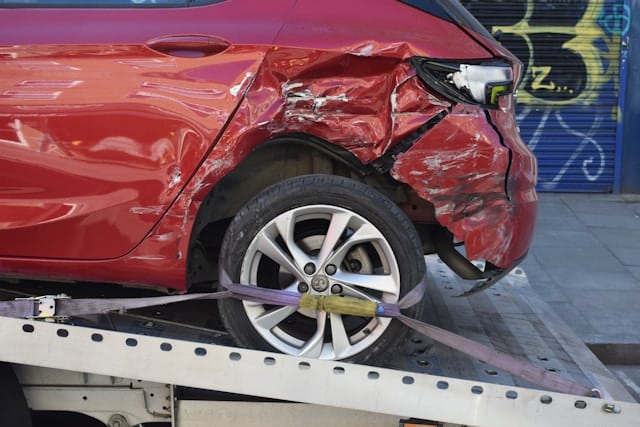How to Handle Collisions Involving Multiple Vehicles
 Multi-vehicle collisions can be among the most stressful and complex types of road accidents, often involving significant damage and multiple parties. The chaos and confusion in the aftermath of such an event can be overwhelming, making it essential to know the proper steps to handle the situation effectively. This guide will walk you through the process of dealing with multi-vehicle collisions, from ensuring personal safety to navigating the legal and insurance complexities that follow.
Multi-vehicle collisions can be among the most stressful and complex types of road accidents, often involving significant damage and multiple parties. The chaos and confusion in the aftermath of such an event can be overwhelming, making it essential to know the proper steps to handle the situation effectively. This guide will walk you through the process of dealing with multi-vehicle collisions, from ensuring personal safety to navigating the legal and insurance complexities that follow.
Ensuring Safety at the Scene
Assess Immediate Safety
Immediately after the collision, assess your surroundings to ensure it is safe to exit your vehicle. If your car is in danger of further impacts or other risks, such as fire, it may be safer to stay inside until help arrives.
Check for Injuries
Once safe, check yourself and your passengers for injuries. Do not attempt to move unless necessary, as you could exacerbate potential injuries. After ensuring your own safety, if feasible, check on the occupants of the other vehicles involved.
Call Emergency Services
Dial emergency services as soon as possible. Provide them with a detailed account of the accident, including the number of vehicles involved and any injuries you are aware of. This information will help dispatch the appropriate response teams to the scene.
Documenting the Accident
Gather Evidence
If it is safe to do so, start gathering evidence. Take photographs of the scene, including all vehicles involved, their positions on the road, any visible damage, and relevant road signs or conditions. This information can be crucial for insurance claims and legal matters.
Exchange Information
Exchange contact and insurance information with all drivers involved. This includes names, addresses, phone numbers, insurance company details, and policy numbers. Also, try to obtain contact information from witnesses.
Obtain a Police Report
Ensure that a police report is filed. The report should include a diagram of the accident scene and a detailed description of the collision. This document is vital for handling insurance claims and will serve as an official record of the event.
Handling Insurance and Legal Issues
Notify Your Insurance Company
Inform your insurance company about the accident as soon as possible. Provide them with all the information you have collected, including a copy of the police report, photos, and witness statements. Be factual and detailed in your account.
Understand Fault and Liability
Multi-vehicle collisions can complicate the determination of fault and liability. In many cases, fault may be shared among several drivers. Your insurance company and the police will play key roles in determining fault based on the evidence and applicable laws.
Consider Legal Advice
Given the complexity of multi-vehicle accidents, consulting with a lawyer who specializes in auto accidents may be beneficial. They can provide guidance on how to proceed with insurance claims, represent you in disputes, and ensure your rights are protected throughout the process.
Conclusion
Handling collisions involving multiple vehicles requires a calm and organized approach. Ensuring safety, documenting the scene, and properly managing the subsequent legal and insurance matters are critical. By following these structured steps, you can navigate the aftermath of a complex collision more effectively, helping to minimize stress and ensure a more favorable outcome. Remember, in such challenging situations, professional advice from law enforcement, legal counsel, and insurance experts is invaluable.
